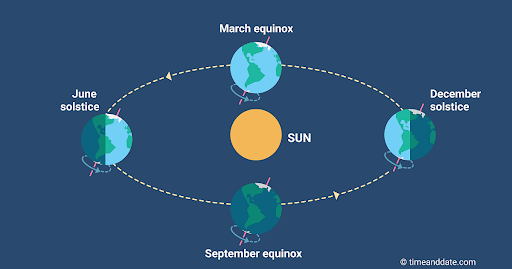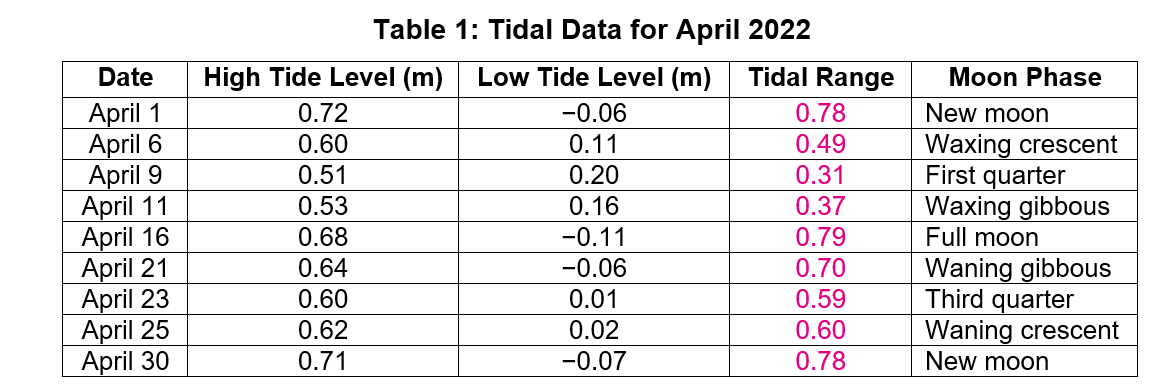Which of these best describes the theory of plate tectonics?
A. Earth’s atmosphere is divided into layers
B. Earth’s continents are fixed in one place
C. Earth’s surface is broken into moving plates
D. Earth’s crust is made entirely of oceanic rock
C. Earth’s surface is broken into moving plates
What causes Earth to have different seasons?
A. The distance from the Sun
B. The tilt of Earth’s axis
C. Earth’s rotation every 24 hours
D. The Moon’s gravitational pull
B. The tilt of Earth’s axis
What is the main cause of tides on Earth?
A. Earth’s rotation
B. The Moon’s gravity
C. Earth’s revolution
D. The tilt of Earth’s axis
B. The Moon’s gravity
What happens at a divergent boundary?
Plates move apart
Which process is responsible for the creation of new crust at mid-ocean ridges?
A. Conduction
B. Sea-floor spreading
C. Continental drift
D. Sedimentation
B. Sea-floor spreading
Which evidence supports the theory of plate tectonics?
A. Fossils are found only on one continent
B. Mountain ranges have identical animals
C. Continents fit together like puzzle pieces
D. The ocean floor never changes
C. Continents fit together like puzzle pieces
Which position of Earth results in summer in the Northern Hemisphere?
A. Earth tilted away from the Sun
B. Earth closest to the Sun
C. Earth tilted toward the Sun
D. Earth farthest from the Sun
C. Earth tilted toward the Sun
How many high tides do most coastal areas experience each day?
Two
What landform is most likely to form at a convergent boundary between two continental plates?
A. Ocean trench
B. Mountain range
C. Rift valley
D. Volcano island arc
B. Mountain range
Look at the diagram showing Earth’s position around the Sun. When Earth is tilted toward the Sun, what season is it in the Northern Hemisphere?
Summer
Why are earthquakes common along plate boundaries?
A. The temperature is higher
B. Plates remain still and unmoving
C. Friction builds up as plates move
D. There are fewer volcanoes near boundaries
C. Friction builds up as plates move
During an equinox, how are daylight and nighttime affected?
A. There is no daylight
B. Day and night are equal
C. It is mostly night
D. There are 24 hours of sunlight
B. Day and night are equal
Which best describes a spring tide?
A. Occurs when the Moon is at a right angle to the Earth and Sun
B. Has the lowest tidal range
C. Happens during new and full moons
D. Happens only in spring months
C. Happens during new and full moons
What boundary causes earthquakes with little to no volcanic activity?
Transform boundary
Use the data table showing high and low tides over two days. Which days have a spring tide?

April 1, April 16, April 30
A scientist finds identical fossils on the coasts of South America and Africa. What does this most likely suggest?
A. The continents were once connected
B. The fossils moved across the ocean
C. The species evolved separately
D. The climate changed in both places
A. The continents were once connected
What would most likely happen if Earth's axis were not tilted?
A. Earth would not rotate
B. Seasons would stay the same
C. All areas would have the same climate
D. There would be no seasonal changes
D. There would be no seasonal changes
What happens during a neap tide?
A. There are no tides
B. The gravitational forces are strongest
C. Tides are more extreme
D. Tidal range is smaller than usual
D. Tidal range is smaller than usual
Which of the following is created at an oceanic-continental convergent boundary?
A. Mid-ocean ridge
B. Ocean trench and volcanoes
C. Earthquake and rift valley
D. Fault lines
B. Ocean trench and volcanoes
Which of the following statements is supported by the movement of tectonic plates?
A. Volcanoes only form in the ocean
B. Earthquakes cannot happen on land
C. The continents are constantly moving
D. Plate boundaries do not change
C. The continents are constantly moving
Which layer of Earth allows tectonic plates to "float" and move?
A. Inner core
B. Crust
C. Asthenosphere
D. Lithosphere
C. Asthenosphere
Which of the following is true about seasons in the Southern Hemisphere compared to the Northern Hemisphere?
A. They are identical
B. They occur at the same time
C. They are opposite
D. They occur in cycles every 10 years
C. They are opposite
Why do tides occur in a predictable pattern?
A. The Sun’s energy fluctuates
B. The Moon’s orbit is irregular
C. Earth rotates on its axis regularly
D. Ocean currents control the pattern
C. Earth rotates on its axis regularly
Which of the following best describes what happens at a subduction zone?
A. Two plates pull apart and form valleys
B. One plate slides under another and melts
C. Two plates slide past without affecting each other
D. Plates remain still but build pressure
B. One plate slides under another and melts
Which two processes work together to recycle Earth’s crust?
A. Deposition and erosion
B. Subduction and sea-floor spreading
C. Weathering and radiation
D. Rotation and revolution
B. Subduction and sea-floor spreading